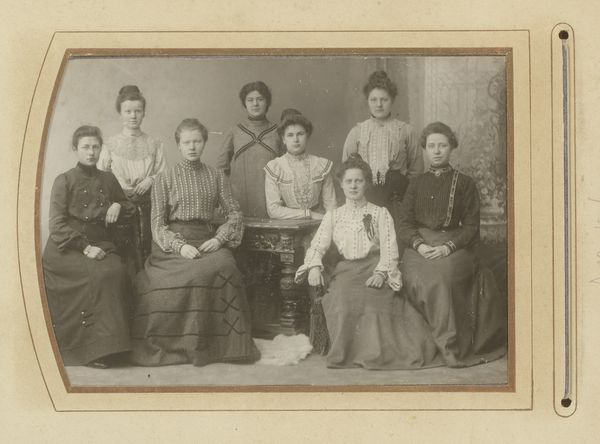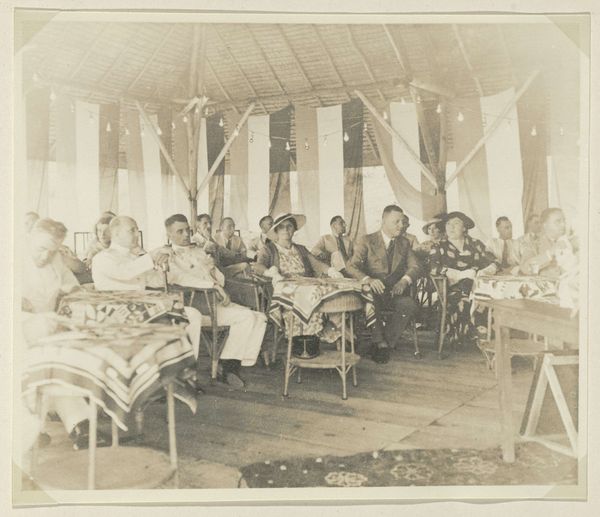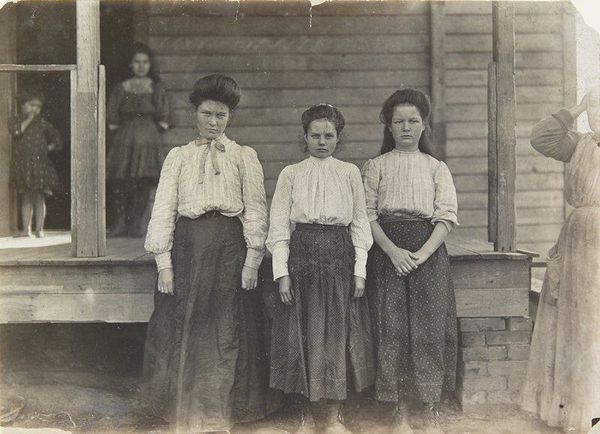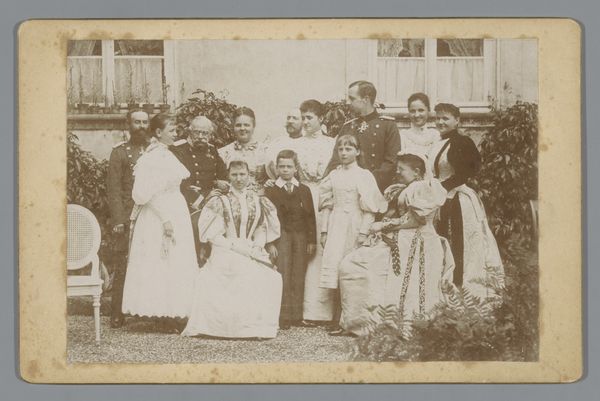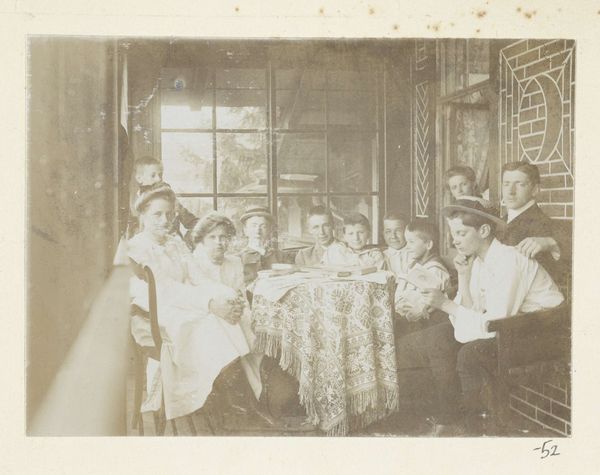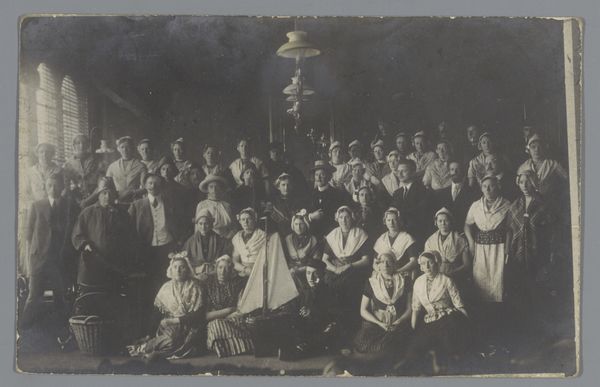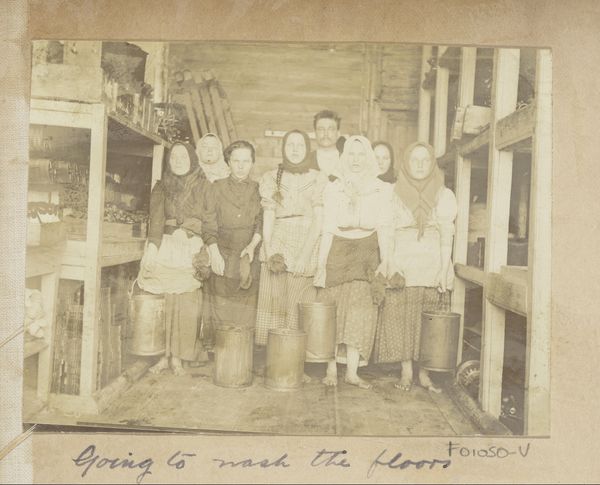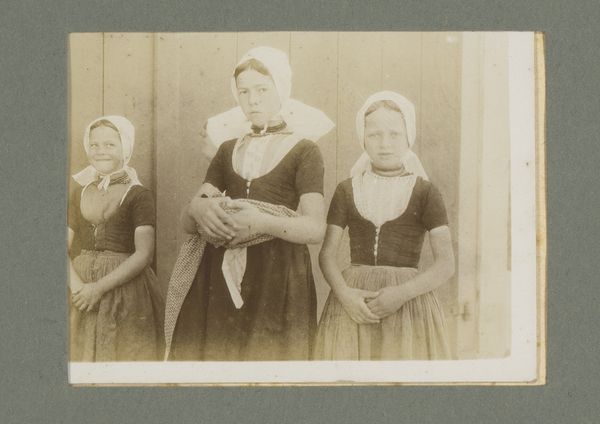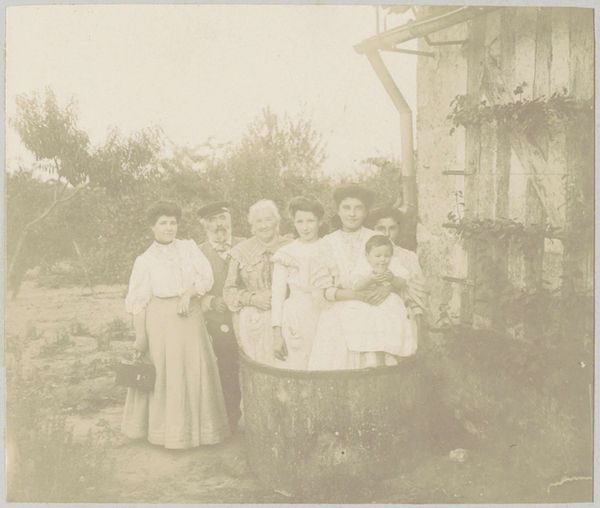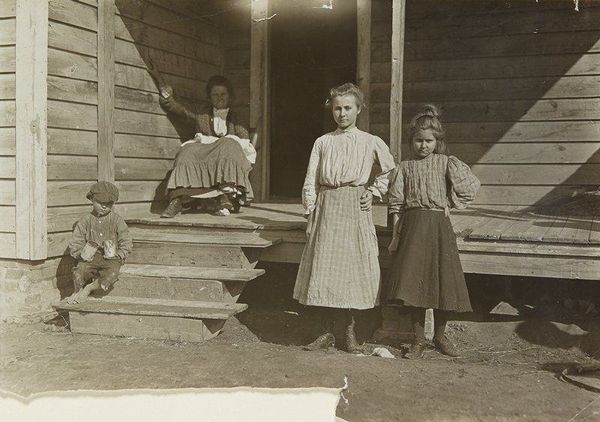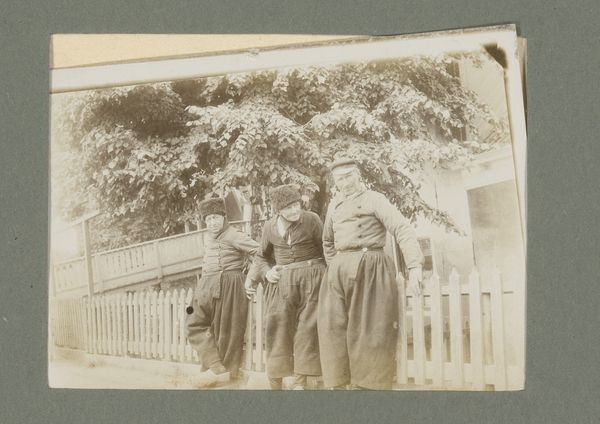
photography
#
portrait
#
indigenism
#
photography
#
russian-avant-garde
#
genre-painting
#
realism
Dimensions: height 85 mm, width 111 mm
Copyright: Rijks Museum: Open Domain
Editor: So, this is a photograph titled "Fabrieksarbeidsters te Sereda in Rusland," taken sometime between 1903 and 1904 by Joseph Cheetham. It depicts women workers. It has this stillness to it, but their collective gaze is really powerful. What do you see in this piece, especially thinking about its historical context? Curator: This image offers a compelling glimpse into the lives of working-class women in early 20th-century Russia. Beyond its realist aesthetic, it’s crucial to consider the pre-revolutionary social fabric. These women, likely part of the burgeoning industrial workforce, occupy a space where tradition and modernity collide. Look at their attire – a blend of traditional headscarves and factory garb. Editor: Right, it's like they are caught between two worlds. Does that tension contribute to the image's meaning? Curator: Absolutely. How does the image speak to the broader narratives of gender, labor, and societal transformation? What do the women's faces convey about their lived experiences? This was a period rife with social upheaval, and these women were central to it. This photograph stands as a testament to their resilience and quiet strength, documenting a very specific moment. The fact that they are workers at a factory in a country where labor rights were almost nonexistent invites dialogue. What were conditions like for these women? What would their perspectives on gender roles be? How can this inform modern discussions about labor and class? Editor: I hadn't thought about it that way before. I see it more as a historical document, but I understand that it also encourages us to ask ourselves these questions. Thank you for highlighting the importance of intersectional narratives in the analysis. Curator: It is crucial that art history connects to today's conversations. It prompts us to ask new questions and engage in a more critical way with both the past and the present.
Comments
No comments
Be the first to comment and join the conversation on the ultimate creative platform.
